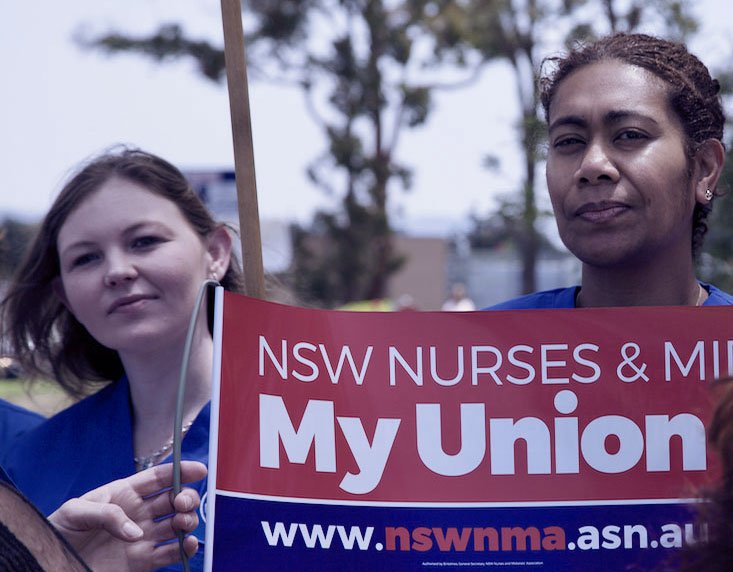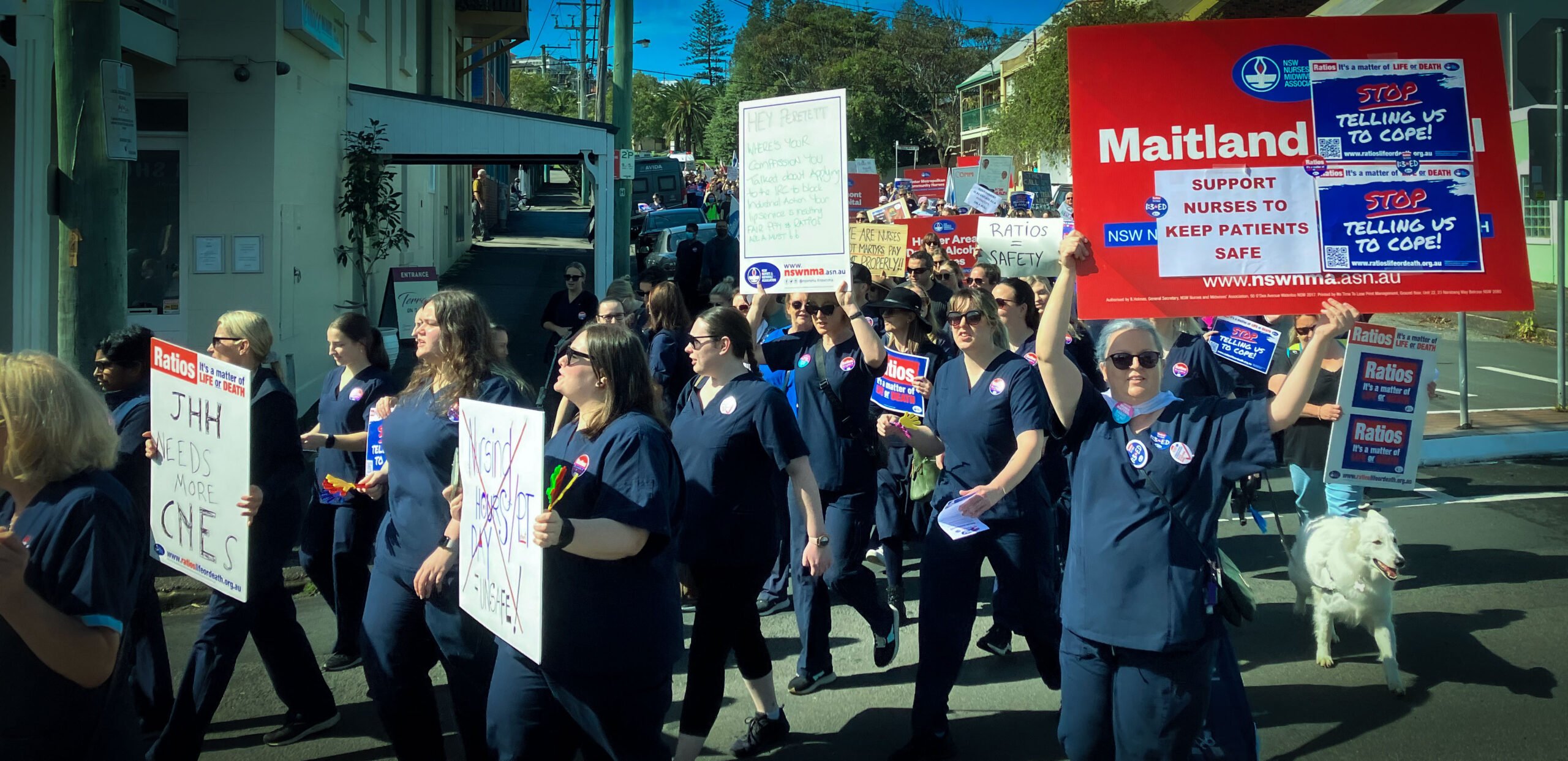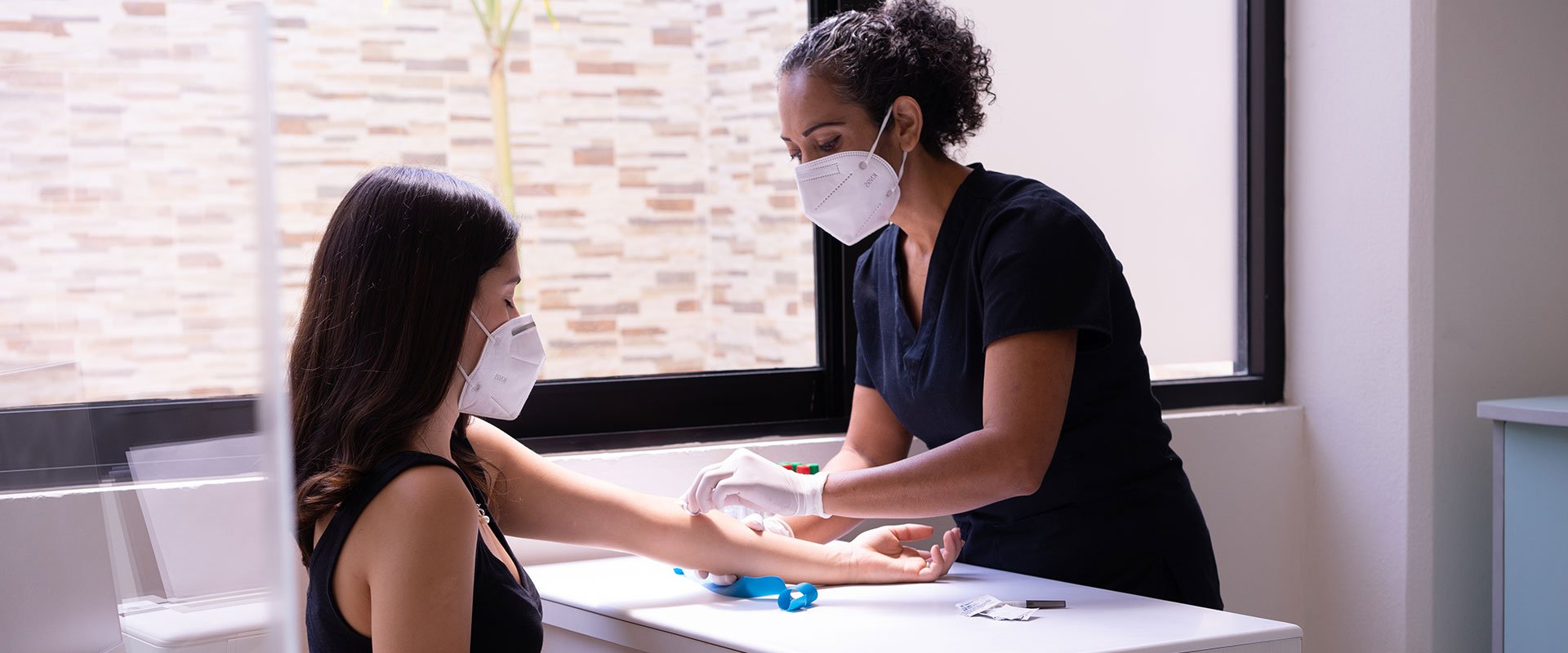Queensland MP Jarrod Bleijie’s parliamentary attack on the Queensland Nurses Union (QNU) over its opposition to the privatisation of the Sunshine Coast University Hospital and of nursing and midwifery jobs is a desperate attempt by the LNP Queensland Government to hide the fact that public hospital privatisation will lead to hefty costs for patients, less nurses and midwives and reduced pay for those nurses and midwives who are left, says the Queensland Nurses Union.
QNU secretary, Beth Mohle, said everyone knows that privatisation is about putting corporate profits or non-government organisation (NGO) surpluses before patient care and the experience of privatisation in most other industries is reduced services, job cuts and/or increased costs for ordinary working people and their families.
“As Tony Abbott and his federal Coalition health spokesperson, Peter Dutton, admitted yesterday when they released their federal health policy at Sydney’s St Vincent’s Hospital rather than a government public hospital, they are about incremental change. And it is obvious to anyone looking closely that this ‘incremental’ change is about breaking down our free public hospital system over time and forcing more and more people into expensive private arrangements.
“The QNU does not believe the choice of St Vincent’s, which has a public beds section, for the Coalition launch was simply one of convenience. It was loaded with policy symbolism. It is similar to the Queensland LNP Government’s attempts to portray the Brisbane Mater Hospital as the model for privatised public hospitals.
“Sydney’s St Vincent’s, established by the Catholic Sisters of Charity, and the Sisters of Mercy’s Mater Public Hospital in Brisbane were set up, in the 19th and early 20th centuries, as free, charitable hospitals prior to the establishment of Australia’s free public hospital system. Because of this they were both allowed to continue doing their work within the context of nationalising other community hospitals, where local communities, councils and private operators were providing a ‘dogs-breakfast’ of services and funding arrangements.
“Historical anomalies like St Vincent’s and the Brisbane Mater are not the basis of sound, equitable public hospital policy. The original Mater model is especially worrying, as it is based on the dangerous and outdated idea that free hospitals are simply an act of charity for the poor. That is currently not the basis of Australia’s public hospital and Medicare system. (See Sydney St Vincent’s and Brisbane Mater history extracts, from their websites, below.)
“However, all the signs suggest that federal and state Coalition governments want to go back to the future in that sense.
“We know every politician seems to have a five-point plan for this or that. Here is the Coalition’s real five-point plan for ‘incremental’ change to our free public hospital system:
“Point or step one – use incentives and premium and tax penalties to force more and more people into poorly-performing financial products like private health insurance. That is what the Howard-Costello-Abbott government did. It poured billions of dollars every year into insurance products and companies, which offer products that leave people with huge gap payments in most cases, rather than into direct patient care.
“Tony Abbott is now saying he will again find billions of dollars each year to let even millionaires get the private health insurance rebate. This can only mean cuts in other areas, just as the Queensland LNP Government has done, and that is another real threat to the jobs, pay and working conditions of many frontline workers such as nurses and midwives.
“Point two – undermine community confidence in and access to public hospitals and health. This is done through such things as sacking clinical and support staff, thereby compromising safe patient care, and reducing or abolishing public hospital and health services. This has certainly occurred in Queensland over the last 12 months, despite none of this being outlined by the LNP prior to the 2012 state election.
“Point three – start privatising hospital services. This is the stage we are at now. Liberals and Nationals have started this at the state level and earlier this year the federal Liberals and Nationals said they would, if elected as the national government, work with states to get more public hospitals into the hands of private companies or NGOs.
“They have been running around madly ever since trying to deny that is what they said, but it is what they said and, from bitter experience here in Queensland over the last 18 months, we know that is what they mean. We also know, from the failed Robina and Port Macquarie hospitals experience under the last Queensland and NSW Coalition governments in the 1990s, that public hospital privatisation is a clear objective of Coalition governments.
“Point four – once the private operators have critical mass in the public hospital sector, governments then use the opportunity to hand over the remaining public facilities. The politicians start running the old argument – what is the point of the government owning 30 or 40 or even 60 or 70 percent of the hospitals? We’ve heard it all before with electricity, Telstra and so on.
“Point five – the private operators now have control of the sector and they use their power to force governments to keep coming up with funding options which maintain or bolster their profits or they will have to cut services. Those funding options invariably involve patient payments and the next thing you know you have an Americanised hospital system, where families face ruin if they incur illness or injury.
“The high costs of healthcare and the number of individual and family bankruptcies due to hospital bills each year in the USA proves this would be a disaster for Australian families. The USA also eats up more than 17 percent of its economic activity on healthcare, while Australia spends less than nine per cent and mostly gets better outcomes for its people. The Liberals and Nationals have started the process of Americanisation and that’s where they’re headed.
“So Mr Bleijie and the Coalition can pretend all they like and try to hoodwink the people of the Sunshine Coast and the rest of Australia that this is not true. They can spit and curse at the QNU all they like. But we know that higher patient costs, reduced nurse and midwife numbers and reduced pay for hardworking nurses and midwives are the end game here with hospital privatisation. It always is with privatisation of public services.
“The question for every Australian is: What type of hospital and health system will we leave our children and grandchildren?
“Our parents and grandparents worked hard to build our free public hospital system and affordable Medicare system, often against powerful corporate and medical vested interests. Will we leave our children and grandchildren the same affordable system or will we leave them a costly privatised mess?” Ms Mohle said.
Sydney St Vincent’s Hospital Venue for Federal Coalition health policy announcement yesterday Establishment history synopsis from St Vincent’s website
History & tradition
In 1838, five nuns from the Order of the Sisters of Charity in Dublin arrived in Australia at the request of Bishop John Bede Polding. They were the first religious community of women to arrive in the new colony. Their mission was to care for the poor and needy within the Sisters of Charity framework of care and compassion.
Early work
Their early work included helping convict women and children at Parramatta, at what was then known as the Female Factory; assisting families during the 1844 influenza epidemic and caring for prisoners and their families at inner-city Darlinghurst Gaol.
First hospital opened
One of the goals of this courageous group of pioneering women was to open their own hospital. On 25 August 1857, St Vincent’s Hospital opened in an estate in Potts Point as a free hospital for all people, but especially for the poor. Three of the Hospital’s founding Sisters were professional nurses, having trained in France, and they brought their knowledge to the colony.
Brisbane Mater Hospital Establishment history synopsis from Mater website
The first private hospital
The first Mater Misericordiae Private Hospital, located in rented premises in Brisbane’s North Quay, opened its doors on 4 January 1906 with accommodation for 20 patients. By the end of its first year, the hospital had treated 141 patients.
The house, called Aubigny, overlooked the Brisbane River and was designed by the distinguished nineteenth century Queensland architect Benjamin Backhouse for the merchant Samuel Davis, a founder of Brisbane’s Hebrew congregation. Built in 1865 the house, with a small synagogue in its grounds, was a handsome three-storied building surrounded on all sides by verandahs.
For the Sisters, a fee-paying private hospital was both a means of addressing the new hospital’s immediate financial needs and a stepping-stone to the Sisters’ ideal of providing a free public hospital for the poor.
Crossing the river (to Mater Hill)
Cardinal Moran of Sydney laid Mater Private Hospital’s Foundation Stone in May 1908. The event was a cause of great celebration and attracted about 12 000 people.
Sixteen months later, on 24 September 1909, Archbishop Dunne laid the Foundation Stone for Mater Public Hospital also designed by Robin Dods and built further down Mater Hill. On 14 August 1910, the new Mater Private Hospital was officially blessed by Cardinal Moran and opened by the Governor, Sir William MacGregor. The hospital grounds were brightly decorated with flags and bunting and crammed by a crowd of 8000 people overflowing to the hillside.
On 8 September, the hospital’s first patient, Mrs Bolger from Fortitude Valley was transferred from Aubigny.
Five months later, on 2 February 1911, the new Mater Public Hospital was opened without fanfare or special celebrations. The construction and outfitting of the v-shaped building had attracted tremendous community support. The women’s wards were furnished by an anonymous donor and Brisbane’s jockeys and horse trainers furnished the men’s surgical ward.







